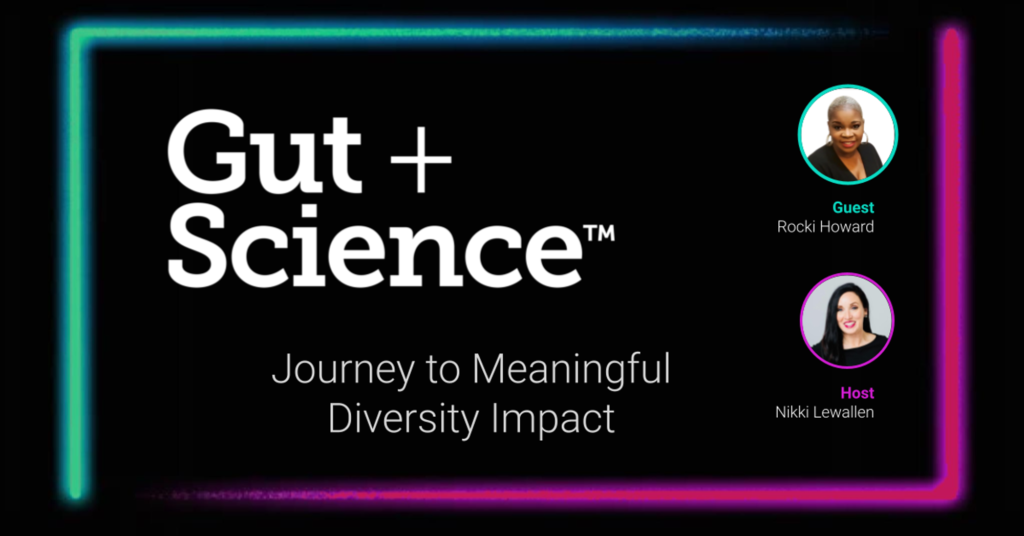What does a successful diversity, equity, inclusion, and belonging culture look like?
Rocki Howard, Chief People and Equity Officer at The Mom Project, says impactful DEI strategies begin with a clean vision. When you know where you plan to go, you can take the steps you need to get there. Rocki discusses the importance of moving beyond good intentions to actually make an impact. You’ll learn how to design your DEI strategy and discover the importance of holding leaders accountable.
Truth You Can Act On
1. Intentions Aren’t Enough
Half of all underrepresented job seekers believe that being from an underrepresented community is a disadvantage in the job search. And I can tell you for sure, as a black woman, I have experienced this and I’ve seen this. So while many of us are batting around the concepts of candidate experience, the data shows our perspective on the experience of diverse candidates is lacking. I understand that people have good intentions, but we’ve got to move past the intentions to actual impact.
2. Begin with the End in Mind
There’s one key consideration that sets the stage for everything else – what does a successful diversity, equity, inclusion, and belonging culture look like for your organization? What we tend to do is go out and look at best practices from companies that may not be like ours. So instead of benchmarking success by all of these other organizations, let’s look at them, see what they’ve done well, and then let’s start by asking, ‘What does DEI mean to my organization?’ What does success mean?
3. Root Diversity in Your Company’s Core
The truth is everyone in an organization owns diversity. The organizations that do it well, tie DEI to their core values. It’s not just something on the wall, people are open to challenging what diversity means, and when they see something go wrong, they say something. They’re constantly evolving their goals and they measure them. They’re being transparent about the progress they’re making or not making. They approach it from a heart and head perspective. So they’re helping people in their organization understand why valuing everybody else is such an important thing. They help bring to life diverse voices and connect them to people who are in the majority. DEI doesn’t belong to underrepresented people, it belongs to us all.
4. Hold Leaders Accountable
Hold all of your leaders accountable. It’s Management 101, not even Leadership 101, but Management 101. We learned very early that we inspect what we expect. And so if you don’t have a way to inspect how your managers are adding to your diversity initiatives, then you can’t expect good outcomes.
Book Recommendation:
- Redefining HR by Lars Schmidt
Listen to the full episode: Journey to Meaningful Diversity Impact with Rocki Howard

